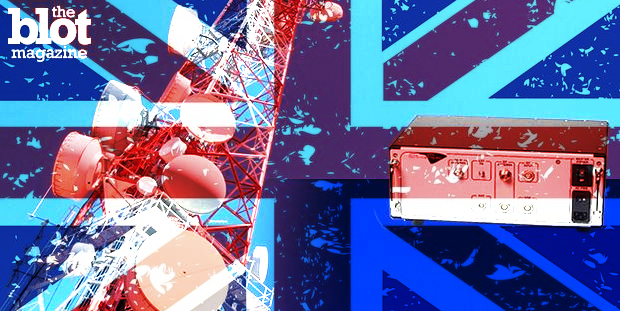For the past few years, American journalists and civil liberties groups have been quietly pulling back the curtain on a once-clandestine surveillance tool used first by the military, then by federal and local law enforcement to eavesdrop on the metadata of citizens’ cellphones.
Now there’s some proof that the same surveillance technology has found its way abroad.
An investigation by the British news channel Sky News claims to have found evidence of fake cellphone towers operating in London and elsewhere that acts similarly to devices known as IMSI catchers, the most famous of which is manufactured under the brand name StingRay.
StingRays and other IMSI catchers act like legitimate cellphone towers, but they’re actually surveillance devices that allow police and other agents to secretly gather data from a person’s cellphone. When deployed, the devices force all phones in a given area to connect to it instead of a legitimate cellphone tower, and once connected, police or any other user of an IMSI catcher can download a wealth of data from phones, including location information, call logs and text message data.
Some IMSI catchers can even eavesdrop on the contents of messages and phone calls, though there’s little evidence that technology is being used in the United States. It is hard, though, to definitively say whether calls are being intercepted using StingRays and other surveillance gear because of the immense secrecy surrounding the devices.
Read more: FBI Dirty Tricks Plague Court Battle Over StingRay Surveillance Records
Nowhere is that secrecy more stringent than in the United Kingdom, as Sky News reporters found when they launched their investigation into the devices. For several weeks, Sky reporters used an Android app to locate fake cellphone towers placed in various parts of London. Their investigation turned up 20 cellphone towers throughout the capital city that could be IMSI catchers.
Bjoern Rupp, the CEO of the software company GSMK Cryptophone that makes applications for the detection of StingRay-like devices, told Sky News that the logs compiled by the channel presented “strong indicators for the presence of IMSI catchers in multiple locations.”
Both Rupp and Sky News stop short of concluding the data shows use of IMSI catchers — only that it strongly supports the likelihood that the devices are being used. And reports dating back years by other news organizations add fuel to the fire of speculation.
In 2011, the Guardian newspaper published a story asserting the Metropolitan Police — the law enforcement body also known as the “Met” that has jurisdiction over much of Greater London — had been using clandestine cellphone surveillance technology to not only monitor the phones of activists, but also to shut off phone signals to all handsets in a particular area. The system identified by the Guardian differs from StingRays in both brand and distributor; StingRays are manufactured and sold by the Harris Corporation of Florida, while the Guardian-identified devices, called “ICT hardware,” were manufactured by a British-based company called Datong.
Read more: TheBlot Magazine’s Ongoing StingRay Coverage
The Met responded to The Guardian’s story by saying it could neither confirm nor deny that it had acquired and been using cellphone signal interception equipment. The agency refused to confirm or deny a follow-up report published by The Times of London on the same topic last year. And it refused to confirm or deny suspicions by Sky journalists when the news organization filed numerous Freedom of Information requests for records related to the devices.
“We’re not going to talk about it,” Met official Bernard Hogan-Howe told Sky News when asked for comment. “The only people who benefit [from a comment] are the other side, and I see no reason in giving away that sort of thing.
“If people imagine that we’ve got the resources to do as much intrusion as they worry about, I would reassure them that’s impossible,” Hogan-Howe added without providing any evidence to support his claim.
Sky News concluded that it was impossible to say exactly who was using the purported IMSI catchers detected in London and for what purpose they might be operating them. Sky noted that in Europe, homemade devices can be purchased on the Internet for around £1,000 (approximately $1,550) that can easily intercept cellphone signals and similar ones transmitted by computers.
In the United States, the illegality of such interception devices makes it highly unlikely that private citizens would be acquiring, making or using IMSI catchers. But that hasn’t stopped police from using them — in fact, an investigation based on documents obtained by TheBlot Magazine, the American Civil Liberties Union and others revealed federal law enforcement successfully asked the Federal Communications Commission, the government body that regulates cellphones and other radio communications equipment, to grant police a waiver allowing federal and local police to use StingRays in any emergency situation. Previously, police were only authorized to use the equipment in narrowly tailored homeland security investigations. The FCC eventually authorized the use of StingRays in broad emergency circumstances.
Matthew Keys is a contributing journalist for TheBlot Magazine.






